
Template fitting analysis for the neutrino diffuse emission in the galactic plane with models and the ARCA, HAWC and LHAASO telescopes
Multimessenger Astronomy is a relatively new field of Astronomy that combines data from different types of cosmic messengers to better understand the Universe.
The discovery of astrophysical neutrinos made available a new messenger for High Energy Astrophysics. This new messenger together with, for example, gamma-ray observations, can bring some light to the astrophysical processes that produce these particles. In particular, in this project the neutrino diffuse emission in the galactic plane is being studied. Said emission refers to the radiation coming from the interstellar gas and dust in our Milky Way galaxy that is spread out over a large area of the sky and is not associated with any particular source (such as a star or galaxy). The interstellar gas and dust that produces the diffuse emission is distributed throughout the Milky Way in a thin, flattened disk. This disk is about 100,000 light-years in diameter and about 1,000 light-years thick. The gas and dust in this disk is constantly interacting with other forms of radiation, such as cosmic rays and ultraviolet light, which can cause the gas to become ionized and emit radiation in various wavelengths. By studying this diffuse emission with different messengers, we can learn more about the physical processes that occur in the interstellar medium and how they affect the evolution of the galaxy over time.
The IceCube experiment has already measured neutrinos of astrophysical origin however, the majority of these neutrinos haven’t been associated with known astrophysical sources and the hypothesis of multiple astrophysical origins seems to be the most accurate. Given that these neutrinos are mainly produced by charged pion decay, a counterpart of gamma-rays is expected due to neutral pion decay.
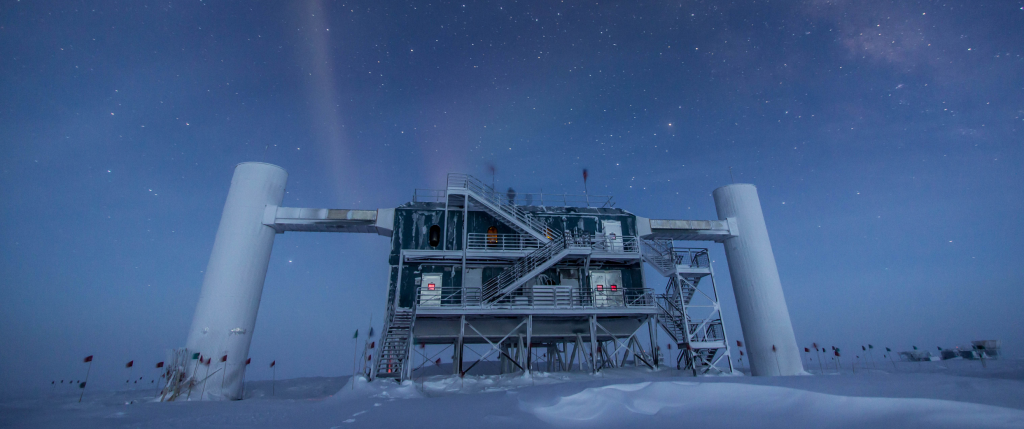
Therefore, the multimessenger approach becomes crucial to study the connection between the neutrinos observed by KM3NeT, HAWC and LHAASO and known astrophysical sources.
The KM3NeT-ARCA (Astroparticle Research with Cosmics in the Abyss) experiment was specifically designed to detect neutrinos with energies from a sew hundred GeV to tens of PeV. Its results will be used to study highly energetic mechanisms in the Universe. Even though ARCA is still under construction, there are already available data to be used in several analyses.
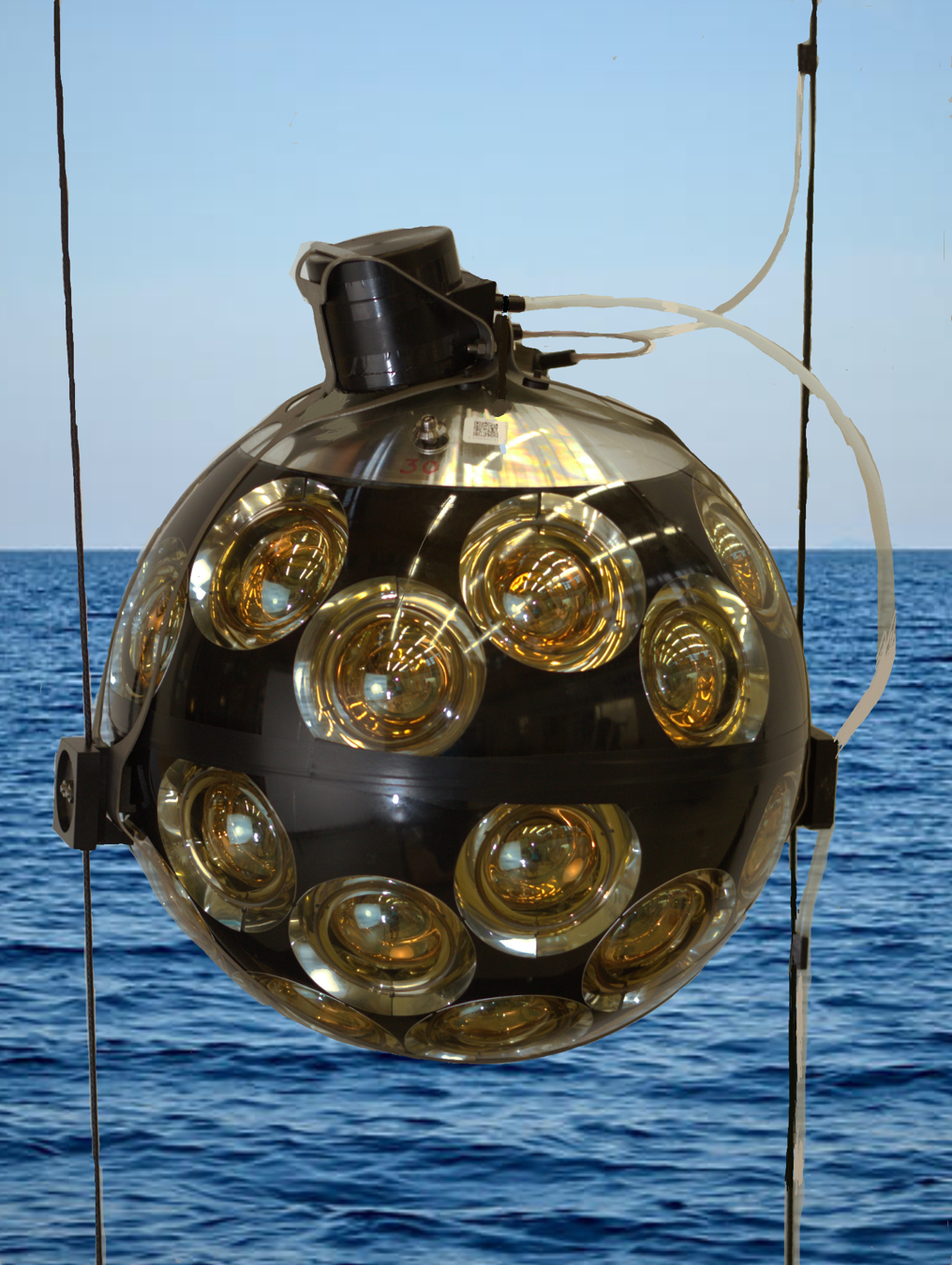
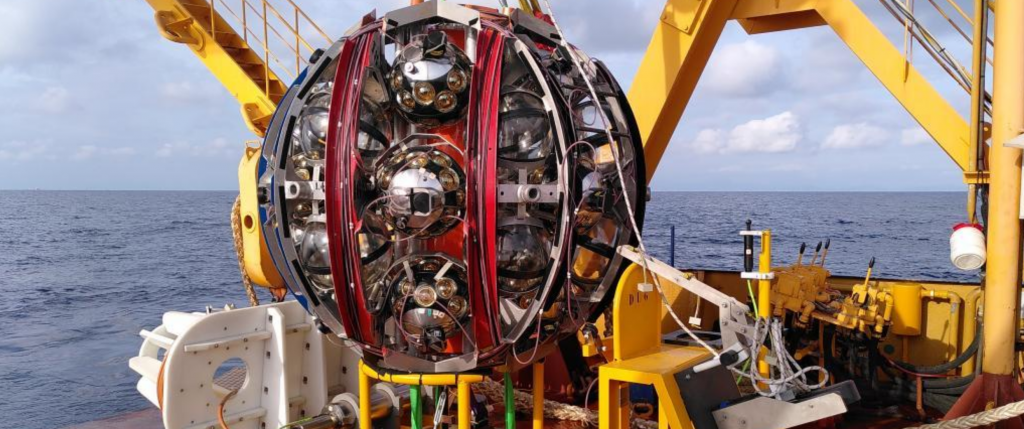
The HAWC (High-Altitude Water Cherenkov) experiment on the other hand, is a gamma-ray observatory positioned over the volcano Sierra Negra in Mexico at 4100m of altitude. It reveals, since 2014, gamma-rays with energies between 100 GeV and a few hundred TeV coming from astrophysical sources. Besides the diffuse radiation emission in our galaxy, HAWC has created a catalogue of pulsar wind nebulae, supernova remnants and active galactic nuclei.
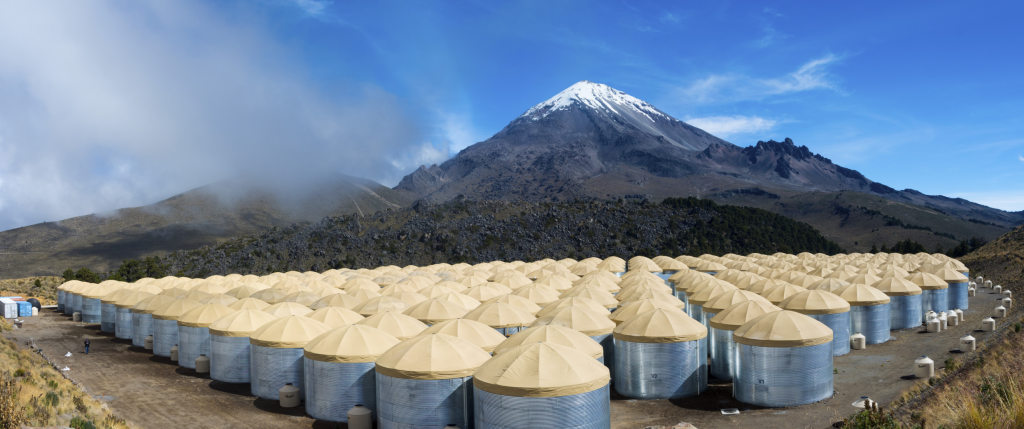
.
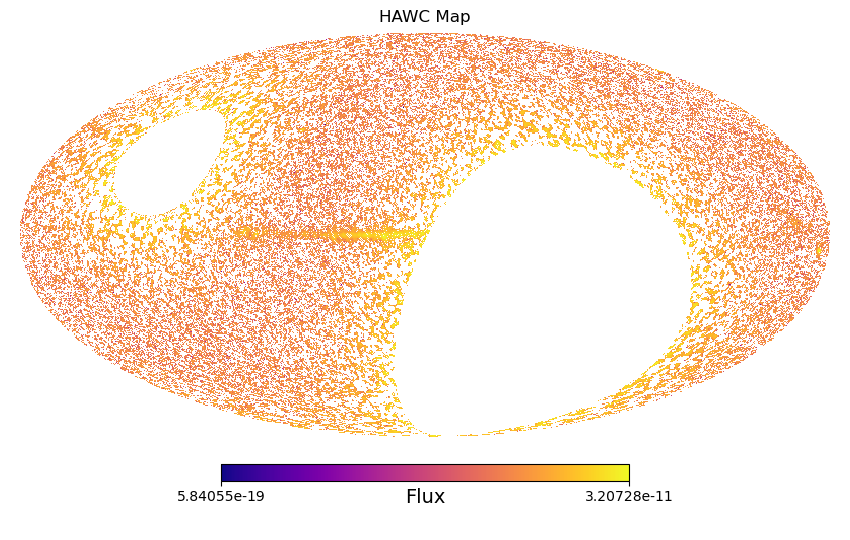

Finally, the LHAASO (Large High Altitude Air Shower Observatory) project is a gamma-ray and cosmic-ray observatory located in Daocheng, in the Garzê Tibetan Autonomous Prefecture in Sichuan, China at 4410m of altitude. It extends to about 145 hectares and has three underground observing pools. Observations started already in April 2019. LHAASO consists of electromagnetic particle detectors (ED) and muon detectors (MD), a water Cherenkov detector array (WCDA), 18 wide field-of-view air Cherenkov telescopes (WFCTA) and a newly proposed electron-neutron detector array (ENDA).
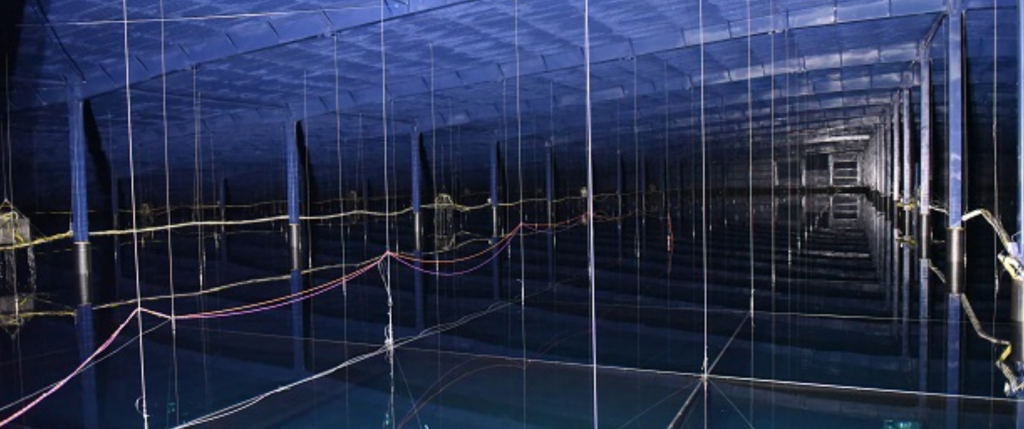
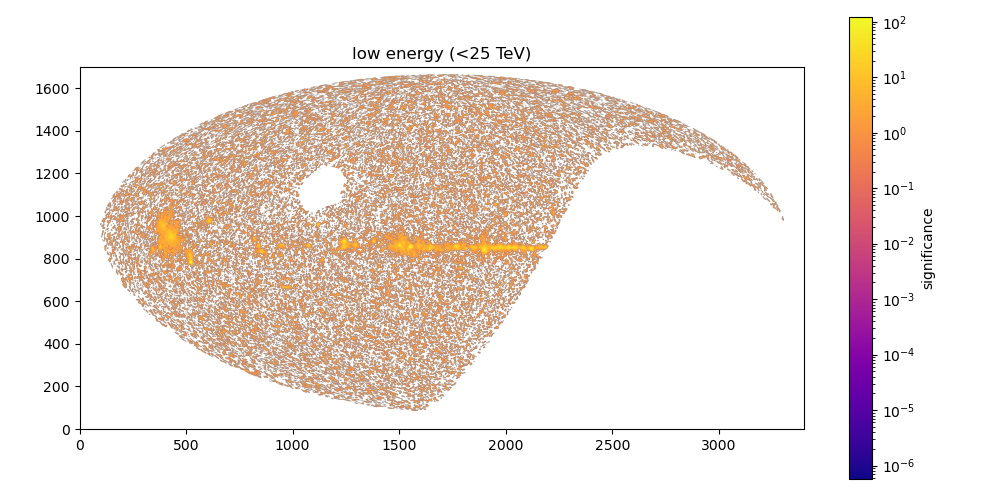
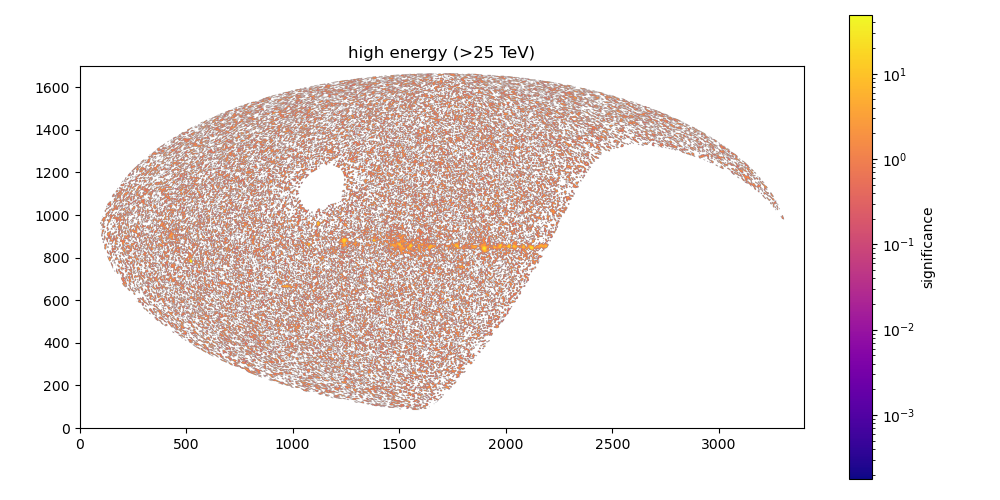
Given that KM3NeT has reached its Phase-1 configuration and will reach its final configuration in 2026, the “follow-up phase” has started to study all the transient events and the possible stable emissions of some promising regions in the sky. An important region to analyse in detail with neutrinos and gamma-rays at energies over the TeV is the Galactic plane where a hadronic diffused component is guaranteed by the interaction of cosmic rays with the interstellar medium. In addition, this is the perfect zone to see almost point-like hadronic excesses in correspondence to massive molecular clouds. A second region that will be studied is that of the near radio-galaxy M87 which hosts an Active Galactic Nucleus (AGN) and has an acceleration jet of charged particles.
For this kind of analysis, HAWC and LHAASO gamma-ray skymaps can be used together with track-like neutrino events observed by KM3NeT/ARCA. The main goal of this study is that of exploit the morphology of emission seen by HAWC and LHAASO to look for excesses of neutrinos over the background in the same region of the sky. The exchange of information between telescopes will allow for a complete investigation of the possible hadronic emission coming from different sources.
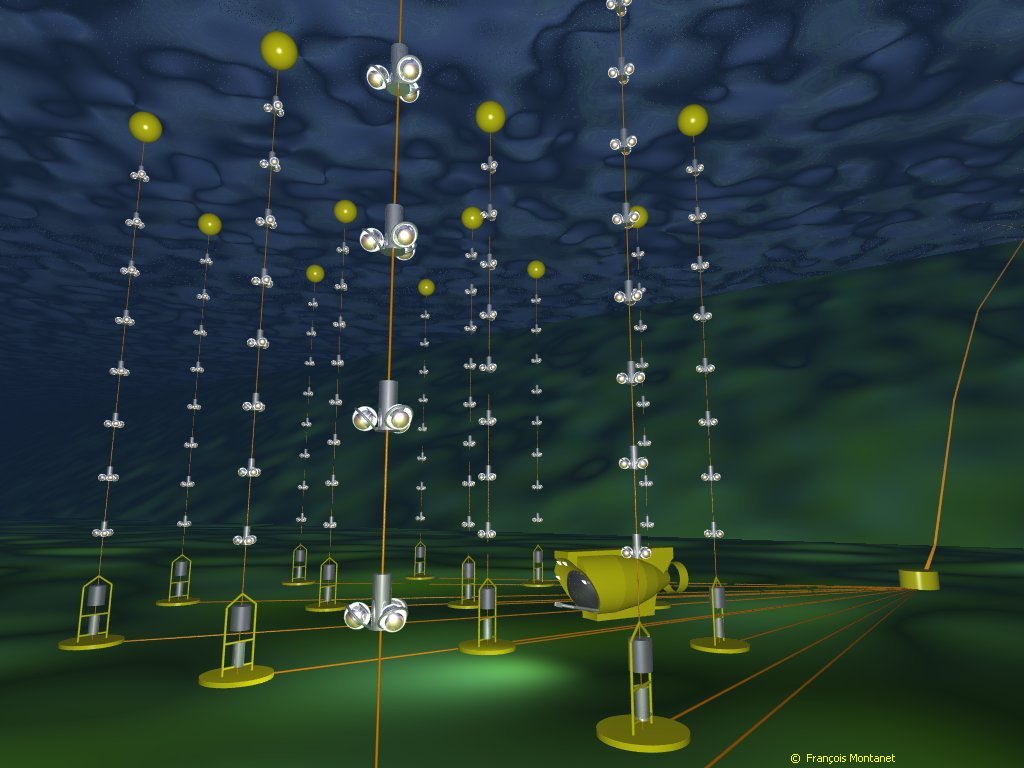
The Napoli group has started working with skymaps of the above mentioned telescopes in the standard Astronomy format: FITS (Flexible Image Transport System). The choice of this format was based on its versatility and available tools for analysis. As a starting point and in preparation for the KM3NeT/ARCA data, skymaps have been produced using the just decommissioned telescope ANTARES and its MonteCarlo simulation data.
ANTARES (Astronomy with a Neutrino Telescope and Abyss environmental RESearch) is the predecessor of KM3NeT. It operated from 2008 to 2022 and was located at 40km off the coast of Toulon, France. It was composed of 12 lines of 350m each. It had a total of 1000 photomultiplier tubes that looked for high energy neutrinos. Its scale was about 1% of KM3NeT which helped to optimise the whole telescope configuration.
